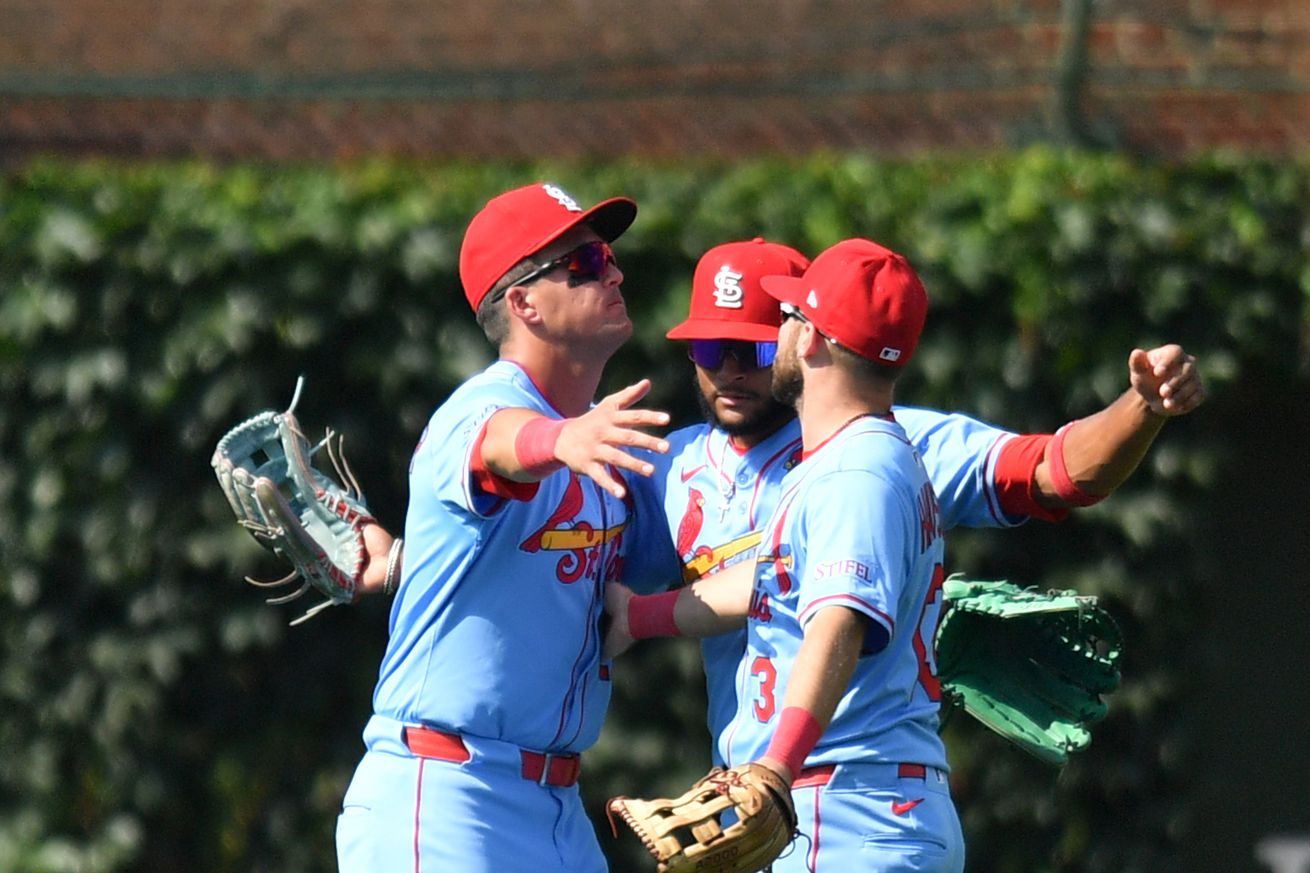
From Wrigley’s cold open to deadline week’s final scene, St. Louis faces a month of identity, tension, and transformation.
You all know I love a good story—I didn’t write a choose-your-own-adventure trade post last week because I don’t. See, the St. Louis Cardinals are arriving at the crossroads of their season. It’s the point in the tale where decisions must be made, paths chosen, and identities revealed. It is why a choose-your-own-adventure even worked at all.
The trade deadline looms, offering their best shot at acquiring talent—but will that talent be for now or for later? Will the Cardinals be contenders? Spoilers? Or something more unpredictable, something harder to categorize?
This coming month feels rich with narrative potential. To my writer brain, it’s clearly shaped like a three-act structure. Let’s break down their July schedule.
Opening Credits — The Cold Open at Wrigley
Before the story begins, we need a setting. No heavy exposition, no narrator voiceover—just a wide shot of Wrigley Field on a warm July afternoon. The Cardinals are coming off a win, with a chance to take the series today against the Cubs. It’s one game. Just one. But it feels bigger than that.
This isn’t where the story starts—it’s the part before that. The prologue. The mood-setter. The cold open that tells you what kind of story you’re in. A win here injects momentum. A loss? Maybe this is a story about resiliency and showing up anyway. I’m not here to write the ending. I’m just pointing out the narrative paths that might unfold.
ACT I: Rising Tensions at Busch Stadium (July 8–13 versus Nationals and Braves)
This first act is where the story stretches its arms and stands up. The Cardinals return home to face the Nationals (37–52) and Braves (39–49)—two struggling teams who might still punch above their weight. This is the moment where the narrative world is defined:
- Protagonists emerge. Players like Masyn Winn, Jordan Walker, maybe Alec Burleson get the chance to be featured characters.
- Themes are planted. Is this a story about rebuilding with urgency? About finding cohesion in the chaos? About youth rising while veterans recalibrate?
- The stakes sharpen. These are games the Cardinals should win. But if they don’t, the consequences shift. Trade rumors grow teeth. Fan optimism takes on a fragile edge.
This stretch is the “calm before the complication.” Or maybe it’s the complication itself. We’ll only know once Act II begins.
ACT II: The Complication — Desert Heat, Thin Air, and a Break in the Story (July 14–23 versus Diamondbacks and Rockies)
Before the drama continues, the script pauses for the All-Star break—normally a narrative interruption, but in this case? It’s part of the story. A disruption. A breather that’s not exactly restful.
The Cardinals may only send one representative to the Midsummer Classic, and as of now, the front-runner appears to be reliever Phil Maton—the offseason addition who slipped into the roster like a Marvel post-credits cameo. It’s telling. Whether it’s a testament to his performance or an indictment of team-wide inconsistency, it kind of frames how muted the national spotlight has become.
Then, back on the road. July 18–20 in Arizona against the 44–45 Diamondbacks. July 21–23 in Colorado against the 20–69 Rockies. Neither team is thriving, but this is baseball out west—where bats wake up in thin air and chaos blooms after dark.
Here, Act II introduces the pressure. Not just from opponents, but from within. It’s hot, it’s unpredictable, and for a team like the Cardinals sitting between buy and sell territory, every misstep whispers into Mozeliak’s ear: Make the call.
ACT III: The Revelation — Padres, Marlins, and the Final Turn (July 24–30)
Whatever this team is, we’ll know by the end of Act III.
The Cardinals return home to face the San Diego Padres (47–41) from July 24–27—a team that always seems to exist in parallel conversation. The Padres spend. The Cardinals hesitate. The Padres chase stars. The Cardinals chase margins. And now, with similar records and former manager Mike Shildt at the helm in San Diego, the matchup feels like a mirror held up to the franchise.
This series has all the ingredients to get the story cooking: tension, symmetry, and a subplot about what might’ve been.
Then comes the final chapter: July 28–30 vs Miami Marlins (40–47). The Marlins have a losing record, but this isn’t just about wins and losses anymore. This is where the moves begin. Dugouts get quiet. Lineups shift without warning. Players linger near the clubhouse, waiting for a phone call that changes everything.
Whether the Cardinals are contenders or not currently hangs in the balance—but the story leads here. To the moment where identity meets action. Where the front office stops watching and starts rewriting.
July has been a story told in chapters—a cold open in Wrigley, rising tension at Busch, desert complications, and a homecoming with everything on the line. Now, the lights dim. Somewhere, John Mozeliak sits at his desk, the hum of trade calls in the background. The team is bruised, unbalanced, but not broken. Not yet.
So we wait—not just to see who will be moved, but to see what kind of story we’re living in. Is this a comeback tale? A transition episode? Or one of those messy narratives that refuse to fit a tidy genre?
Whatever happens next, July wrote the setup. August will answer the question.
Happy Sunday!